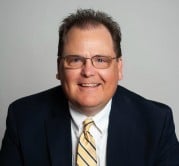Movement vs. Industry – how do you define the credit union space?

It’s not new; this question has been debated before. I have been called out more than once for defining the credit union space as a movement rather than an industry. I have friends on both sides of the debate and, arguably, both words apply.
With the 2015 CUNA Governmental Affairs Conference knocking at our doors, and thousands of us meeting to discuss the future and descend on Capitol Hill to lobby our elected representatives, I thought it might be a good time to consider which word – movement or industry – most accurately describes what we do. Which word will best elicit the reaction we desire?
A movement is defined as a group of people working together to advance their shared political, social, or artistic ideas. Think Martin Luther King, Jr.
An industry is defined as the production of a good or service within an economy. Think Ford Motor Co.
Both descriptions are technically accurate for credit unions, and both examples positively transformed society’s quality of life. Yet, one is more inspirational and speaks directly to the heart.
Our roots
The credit union system began as a social movement to create affordable access to credit and to promote thrift. Most of us know this, and I am sure it will be repeated more than once during Hill visits the second week of March. Passionate credit-union pioneers worked to share the credit-union ideal and were responsible for chartering tens of thousands of credit unions. Thanks to credit unions and their social movement, millions of Americans and immigrants gained access to affordable credit, learned how to save, and, as a result, prospered financially and migrated to the middle class. The early credit-union movement was inspiring, and it improved the quality of life for millions.
Words matter
Using the right word can transform ideas into clear, captivating actions and ideals. Leadership guru Simon Sinek is best known for popularizing the concepts of “The Golden Circle” and to first “start with why”. (If you have not seen this, I highly recommend it:http://www.ted.com/talks/simon_sinek_how_great_leaders_inspire_action). Sinek proposes that people don’t buy what we do or how we do it, but they buy “why” we do what we do. People who believe in a concept or idea will attract people who believe in what they believe. It is the why that resonates and motivates people to listen to what we have to say and take notice of what we believe to be true about the world. This is very important, especially when we are trying to convey our uniqueness to the world and justify our unique not-for-profit chartering system.
What do you believe?
I believe that our “why” is still inspiring, and is still accurately defined as a social movement.
Words matter, but action speaks louder than words. Here are a few examples of why I believe movement more accurately defines the credit union space as a whole. Hint: these might be good examples to share during your capitol hill visits.
Mendo Lake Credit Union – $188-million credit union headquartered in Ukiah, CA.
MLCU serves a diverse, low-income, overlooked rural community that includes low-income, Hispanic and Native American communities. MLCU is the main buffer between local low-income consumers and large, profit-oriented, banks, check-cashers, and predatory lenders. Financial inclusion is the credit union’s mission, and it walks the talk by providing one-on-one financial education, and products and loans that are specifically unique to the credit union’s membership. It actively lends to the underserved groups and demonstrates that credit unions can grow and do well by doing good.
Tuscaloosa Credit Union – $60.1-million credit union headquartered in Tuscaloosa, AL.
At TCU the “people helping people” mantra is alive and well. TCU has a mission of making affordable housing available for its lower-income target market. It does this by partnering with the local housing authority to provide financial, credit, and home buyer counseling, a process that ultimately results in the credit union financing consumer’s first home (loans that traditional financial institutions will not make). It’s an inspiring program and it’s probably why TCU was selected as the 2015 CU Times Trailblazer of the Year for Serving the Underserved.
Mid Oregon Credit Union – $191-million credit union headquartered in Bend, OR.
MOCU’s mission is to serve communities that include lower-income, Hispanics and Native Americans. MOCU serves consumers across a very wide demographic spectrum. When it comes to financial inclusion, this credit union walks the talk. It has developed unique programs to educate and serve each of its communities – regardless of income or credit status. MOCU’s mission has attracted a robust collection of community partnerships that include education, economic development, minority, and social service providers that have gathered to support the credit union’s programs. MOCU is a community leader and, working together,it is improving the quality of life in the communities it serves.
First Kingsport Credit Union –$44.2-million credit union headquartered in Kingsport, TN.
FKCU is a smaller credit union with a big “Can Do” attitude. FKCU thrives in a community that is full of mainstream financial providers because its focus is on serving the “little guys:” hard-working Americans who struggle to get by with wages that haven’t caught up with rising prices, and who have credit that has been challenged during tougher economic times. FKCU is that bridge that helps its members move from savings- and credit-challenged to stronger consumers with savings and improved credit profiles. Many if not most of these consumers would be left to predatory lenders, if not for the credit union’s mission to serve this frequently overlooked class of consumers.
Collectively, these four examples reach tens of thousands of consumers annually who are usually overlooked by the financial “industry.”
If we are a movement, what are we moving toward?
I believe that, for the most part, the credit union space is still moving toward a better quality of life for the consumers and communities we serve. Hence, the credit union space is a movement, rather than an industry. This movement toward a better quality of life is reflected in the thousands of credit unions that still serve a large sector of the overlooked, and it’s also reflected in the significant community give-back that is consistently demonstrated by credit unions (and movement leaders) of all sizes and in all types of communities throughout the country.
Moving toward a better quality of life is our best “why,” and if we remain firmly committed, it will continue to resonate with people who seek out and believe what we believe.





